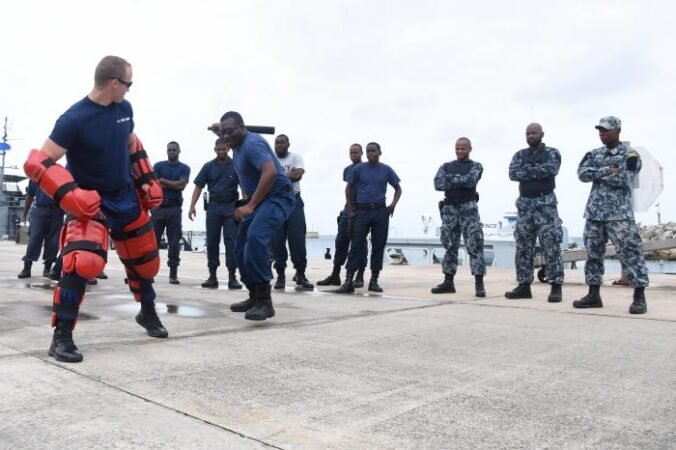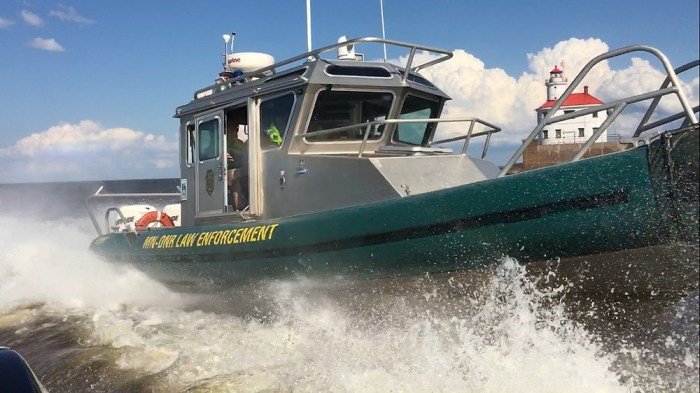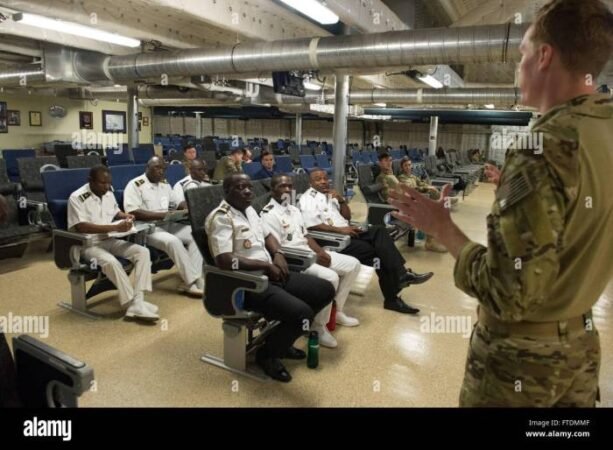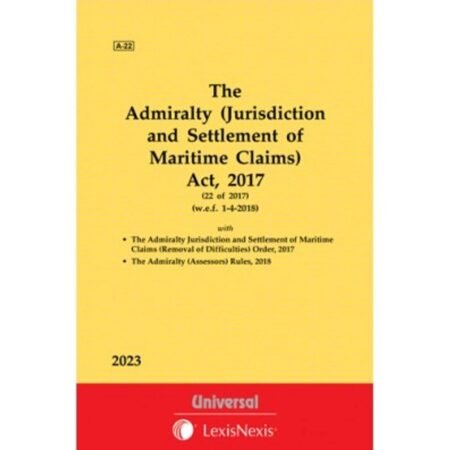
- Job Description & Requirements of a Maritime Enforcement Specialist
- Investigative Techniques & Procedures
- Technology & Equipment Used in Maritime Enforcement
- Collaboration & International Cooperation
- Emerging Threats & Challenges in Maritime Enforcement
- Conclusive Thoughts
- Frequently Asked Questions
Protecting our oceans requires a dedicated force: Maritime Enforcement Specialists. These professionals play a crucial role in upholding international and national laws, combating maritime crime, and ensuring the safety and security of our waterways. Their work is multifaceted, demanding a unique blend of law enforcement expertise, nautical knowledge, and technological proficiency. This exploration delves into the demanding world of maritime enforcement, examining the roles, responsibilities, and challenges faced by these vital officers.
From battling piracy and smuggling to tackling environmental violations and emerging cyber threats, Maritime Enforcement Specialists confront a constantly evolving landscape of criminal activity. Understanding their training, the legal frameworks they operate within, and the cutting-edge technologies they utilize is critical to appreciating the scope and importance of their work in safeguarding our global maritime domain.
Job Description & Requirements of a Maritime Enforcement Specialist
Maritime Enforcement Specialists are vital members of law enforcement agencies, responsible for maintaining order and security on waterways. Their roles encompass a wide range of duties, demanding a unique blend of skills and training not typically found in land-based law enforcement. This description Artikels the typical responsibilities, qualifications, and demands of this challenging and rewarding career.
Daily Tasks and Responsibilities
A typical day for a Maritime Enforcement Specialist can vary greatly depending on their assignment and the agency they work for. However, common tasks include patrolling waterways, conducting vessel inspections, enforcing maritime laws and regulations, responding to emergencies (such as accidents, search and rescue operations, and pollution incidents), investigating crimes committed on or near the water, apprehending suspects, and preparing detailed reports of their activities. They may also participate in training exercises, maintain their equipment, and collaborate with other agencies. The work often involves operating specialized vessels, utilizing advanced technology, and working in diverse weather conditions.
Educational Qualifications, Certifications, and Training
Becoming a Maritime Enforcement Specialist typically requires a high school diploma or equivalent, though many agencies prefer candidates with an associate’s or bachelor’s degree in a related field, such as criminal justice or marine science. Crucially, extensive training is mandatory, encompassing areas like maritime law, navigation, boat handling, search and rescue techniques, self-defense, and the use of specialized equipment. Certifications such as a boat operator’s license, certifications in first aid and CPR, and potentially advanced certifications in specific areas like diving or underwater search and recovery are often required or highly advantageous. Agencies typically provide on-the-job training to further develop skills and knowledge.
Physical and Mental Demands and Potential Hazards
The job is physically demanding, requiring stamina, strength, and agility. Officers may spend long hours on patrol in various weather conditions, often exposed to the elements. They must be able to lift heavy objects, operate equipment, and respond quickly to emergencies. The work also presents significant hazards, including exposure to dangerous waters, potential encounters with hostile individuals, and the risk of accidents involving vessels or equipment. Mental demands are substantial, involving handling stressful situations, managing risk, making quick decisions under pressure, and dealing with potentially traumatic events. Exposure to hazardous materials during pollution incidents also poses a significant risk.
Comparison of Required Skills
The following table compares the required skills of a Maritime Enforcement Specialist to those of a land-based law enforcement officer:
| Skill | Maritime Enforcement Specialist | Land-Based Law Enforcement Officer |
|---|---|---|
| Navigation & Boat Handling | Essential | Not Required |
| Maritime Law Knowledge | Essential | Limited or Specialized Knowledge |
| Water Rescue Techniques | Essential | Not Required |
| Investigation Skills | High Level | High Level |
| Communication Skills | High Level | High Level |
| Physical Fitness | High Level | High Level |
| Knowledge of Emergency Procedures | High Level (Maritime Specific) | High Level (Land Specific) |
Investigative Techniques & Procedures
Maritime crime investigations demand specialized knowledge and meticulous procedures. Success hinges on the effective application of established investigative techniques, coupled with the use of advanced technologies and a thorough understanding of maritime law and regulations. This section details the standard operating procedures, evidence gathering methods, and best practices employed in these complex investigations.
Effective investigation of maritime crimes requires a multi-faceted approach. Investigators must be adept at coordinating resources, analyzing data from various sources, and understanding the unique challenges posed by the maritime environment. The complexity of the investigation varies significantly depending on the nature of the crime, location, and the number of parties involved.
Standard Operating Procedures for Investigating Maritime Crimes
Investigations typically begin with the receipt of a report or intelligence indicating a potential crime. This could range from a distress signal to an anonymous tip. The initial response often involves verifying the information, securing the scene (if possible), and identifying potential witnesses or victims. Subsequent steps involve a thorough examination of the vessel, cargo, and any related documentation. This often includes detailed interviews, forensic analysis of physical evidence, and collaboration with other agencies, both domestically and internationally, as maritime crimes frequently transcend national borders. For instance, an investigation into illegal fishing might involve analyzing catch records, satellite imagery, and interviewing crew members, while a piracy investigation would necessitate coordinating with international naval forces and possibly employing specialized hostage negotiation techniques.
Evidence Gathering Techniques in Maritime Investigations
Gathering evidence in maritime investigations presents unique challenges. The perishable nature of evidence, the remoteness of locations, and the potential for evidence tampering necessitate careful planning and execution. Investigators utilize a range of techniques including: physical evidence collection (e.g., samples of contraband, damaged equipment, weapons); document examination (e.g., ship manifests, logbooks, communications records); witness interviews (including crew members, passengers, and onshore contacts); and digital forensics (e.g., analyzing data from ship’s computers, GPS trackers, and communication systems). Advanced technologies, such as underwater remotely operated vehicles (ROVs) for searching sunken vessels or detecting submerged contraband, and satellite imagery for monitoring suspicious activities, are increasingly crucial. Forensic analysis might involve DNA testing, fingerprint analysis, or the examination of trace evidence found on the vessel or cargo.
Comparison of Investigative Strategies in Different Maritime Enforcement Operations
Investigative strategies differ significantly depending on the type of maritime crime. Smuggling investigations, for example, often focus on intelligence gathering, surveillance, and undercover operations to identify smuggling routes and networks. Piracy investigations, in contrast, may involve rapid response tactics, hostage rescue operations, and international collaboration to apprehend perpetrators and secure the release of hostages. Illegal fishing investigations often rely on satellite monitoring, vessel tracking systems, and analysis of fishing logs to identify and prosecute offenders. Each type of operation requires a tailored approach, leveraging specialized skills and resources.
Best Practices for Maintaining Chain of Custody and Ensuring Admissibility of Evidence
Maintaining the integrity of evidence is paramount to successful prosecution. This requires meticulous documentation and adherence to strict chain-of-custody procedures.
- All evidence must be properly labeled, documented, and secured immediately upon discovery.
- A detailed chain-of-custody record must be maintained, documenting each individual who handles the evidence, the date and time of handling, and the reason for handling.
- Evidence must be stored in secure, controlled environments to prevent contamination or degradation.
- Appropriate forensic techniques must be employed to ensure the evidence is not compromised during analysis.
- All procedures must comply with relevant legal standards and regulations to ensure the admissibility of evidence in court.
Technology & Equipment Used in Maritime Enforcement

Maritime enforcement relies heavily on a sophisticated array of technologies and equipment to effectively patrol vast expanses of water, detect illegal activities, and ensure the safety of personnel and vessels. These tools range from traditional navigational aids to cutting-edge surveillance systems, all working in concert to maintain maritime security and uphold the law.
Maritime Enforcement Specialists utilize a diverse range of technologies to perform their duties. These technologies are constantly evolving to meet the challenges of increasingly sophisticated maritime crime. Effective use of these tools requires specialized training and a deep understanding of their capabilities and limitations.
Radar Systems
Radar systems are fundamental to maritime surveillance. These systems emit radio waves that bounce off objects, providing information about their range, bearing, and speed. Maritime enforcement vessels employ various types of radar, including surface search radar for detecting vessels and navigational hazards, and weather radar for monitoring meteorological conditions that can impact operations. The data gathered by radar systems are crucial for identifying potential threats, tracking vessels of interest, and coordinating responses to incidents. Advanced radar systems can even provide information about the size and type of vessel detected, enhancing situational awareness.
Sonar Technology
Sonar, or sound navigation and ranging, uses sound waves to detect and locate objects underwater. This technology is vital for detecting submerged objects, such as mines, sunken vessels, or even submarines in specific circumstances. Different types of sonar exist, including active sonar, which emits sound pulses and listens for echoes, and passive sonar, which listens for sounds emitted by other sources. Sonar is particularly important in anti-smuggling operations, where contraband might be hidden underwater.
Communication Systems
Effective communication is paramount in maritime enforcement. Maritime Enforcement Specialists rely on a range of communication systems, including VHF (Very High Frequency) radios for short-range communication with other vessels, and satellite communication systems for long-range communication and data transmission, even in remote areas. These systems enable coordination among multiple vessels, communication with shore-based command centers, and the rapid dissemination of critical information during emergencies. Secure communication channels are vital to protect sensitive information and operational security.
Unmanned Aerial Vehicles (UAVs) and Drones
The integration of drones and other UAVs has significantly enhanced maritime surveillance capabilities. These unmanned aircraft can provide aerial reconnaissance, allowing officers to monitor large areas, identify suspicious activity, and gather evidence from a safe distance. Drones equipped with high-resolution cameras and thermal imaging capabilities can detect vessels attempting to evade detection, track smuggling routes, and monitor environmental conditions. The use of drones significantly increases the efficiency and effectiveness of maritime patrols, allowing for quicker response times and a wider area of coverage.
Challenges and Opportunities of Technological Advancement
The increasing use of technology in maritime law enforcement presents both challenges and opportunities. One challenge is the need for ongoing training to keep pace with technological advancements. Furthermore, the cost of acquiring and maintaining sophisticated equipment can be substantial. However, technological advancements offer significant opportunities to enhance operational effectiveness, improve safety, and strengthen enforcement capabilities. For example, the use of artificial intelligence (AI) and machine learning (ML) is showing promise in automating data analysis, improving threat detection, and optimizing patrol routes.
A Typical Maritime Patrol Vessel
Imagine a 40-meter long patrol vessel, sleek and powerful, cutting through the waves. Its hull is reinforced for stability in rough seas, and the vessel is equipped with advanced stabilization systems to minimize motion and ensure the comfort and effectiveness of the crew. On deck, a powerful searchlight illuminates the surrounding waters at night, while multiple radar antennas swivel, constantly scanning the horizon. A remotely operated underwater vehicle (ROV) is deployed from a dedicated launch and recovery system, allowing for underwater inspections and investigations. Inside, a sophisticated command center houses advanced communication systems, navigation equipment, and data analysis tools. Large screens display real-time data from radar, sonar, and UAV feeds, allowing the crew to monitor the situation comprehensively. The vessel also carries specialized equipment for boarding operations, evidence collection, and the apprehension of suspects. The vessel’s propulsion system is highly efficient and capable of sustained high speeds, enabling rapid response to incidents. The entire vessel is designed with safety and operational effectiveness as paramount considerations, representing the cutting edge of maritime law enforcement technology.
Collaboration & International Cooperation
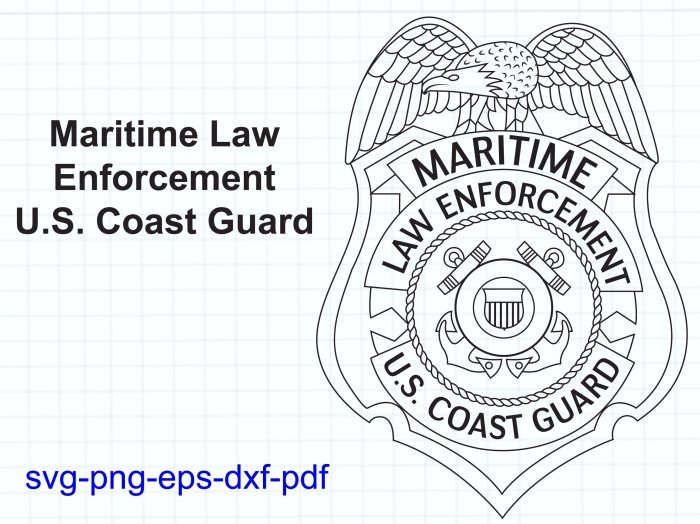
The effective enforcement of maritime law hinges critically on robust collaboration, both domestically between different agencies and internationally between nations. The interconnected nature of global maritime trade and the transnational character of many maritime crimes necessitate a unified and coordinated approach. Without such cooperation, criminals can exploit jurisdictional gaps and evade prosecution, undermining the rule of law at sea.
The scale and complexity of maritime crime demand a collaborative response. Successful enforcement relies on the pooling of resources, expertise, and intelligence to identify threats, track perpetrators, and bring them to justice. This collaborative effort is not merely desirable; it is essential for maintaining maritime security and protecting the global economy.
Successful International Cooperation Initiatives
Several successful initiatives demonstrate the power of international collaboration in combating maritime crime. One example is the establishment of regional maritime security centers, such as those in the Gulf of Guinea and the Indian Ocean. These centers facilitate information sharing, coordination of patrols, and joint operations among participating nations, leading to increased arrests and seizures of illegal goods. Another successful example is the development of international legal frameworks, such as the United Nations Convention on the Law of the Sea (UNCLOS), which provides a legal foundation for maritime cooperation and the prosecution of maritime crimes. These conventions establish common standards and procedures, facilitating cooperation and the harmonization of legal approaches across different jurisdictions. Furthermore, numerous bilateral and multilateral agreements exist between nations to address specific maritime threats, such as piracy and illegal fishing, further strengthening international collaboration efforts.
Challenges in Coordinating Efforts Across Jurisdictions and Agencies
Coordinating efforts across different jurisdictions and agencies presents significant challenges. Differences in legal frameworks, enforcement priorities, and investigative techniques can hinder effective collaboration. Language barriers, differing communication protocols, and a lack of standardized data formats can also impede information sharing. Furthermore, competing national interests and jurisdictional disputes can complicate joint operations and the sharing of sensitive intelligence. Resource disparities between nations also present a significant challenge, as some nations may lack the capacity to fully participate in international collaborations.
Strategies for Improving Communication and Information Sharing
Several strategies can improve communication and information sharing among maritime law enforcement agencies globally. The adoption of standardized communication protocols and data formats is crucial for ensuring interoperability between different systems and agencies. Investing in advanced communication technologies, such as secure data networks and satellite communication systems, can enhance real-time information sharing and coordination during joint operations. Regular joint training exercises and capacity-building initiatives can improve interagency cooperation and enhance the skills of maritime law enforcement personnel. The establishment of dedicated liaison officers within agencies and the development of strong working relationships between personnel from different countries are vital for fostering trust and effective communication. Finally, promoting transparency and building mutual confidence through regular meetings and information-sharing platforms can strengthen international cooperation and enhance the effectiveness of maritime enforcement efforts.
Emerging Threats & Challenges in Maritime Enforcement
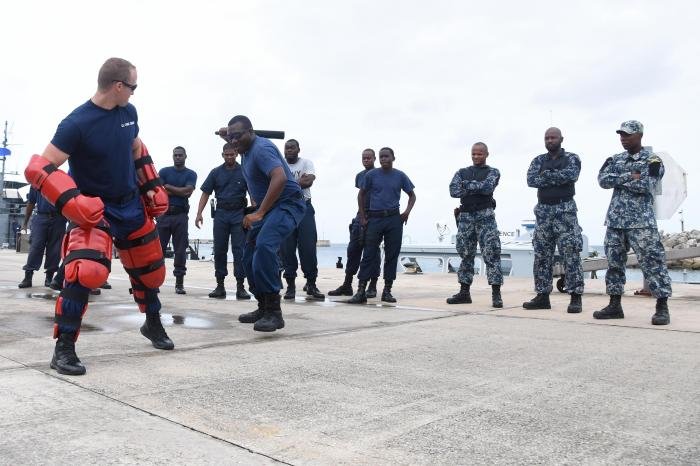
The maritime domain faces an evolving landscape of threats, demanding a dynamic and adaptable approach to law enforcement. Traditional challenges like smuggling and piracy persist, but are now intertwined with sophisticated cybercrime, the potential for terrorist activity at sea, and the escalating consequences of environmental damage. These interconnected threats require a multi-faceted strategy that integrates advanced technologies and international collaboration.
The scale and complexity of these threats necessitate a significant shift in maritime enforcement strategies. Simply reacting to incidents is no longer sufficient; proactive measures, intelligence gathering, and predictive policing are crucial for effective mitigation. This requires investment in both human capital – training personnel in new investigative techniques and technological applications – and technological infrastructure – enhancing surveillance capabilities and data analysis tools.
Cybercrime in the Maritime Sector
Cyberattacks targeting maritime infrastructure, such as port systems, shipping vessels, and navigation technologies, pose a significant risk. These attacks can disrupt operations, cause financial losses, endanger lives, and even facilitate other criminal activities like smuggling or piracy. For example, a successful cyberattack on a port’s container tracking system could allow smugglers to bypass security checks and move illicit goods undetected. Addressing this threat requires robust cybersecurity measures, including advanced threat detection systems, regular security audits, and employee training on cybersecurity best practices. Furthermore, international collaboration is crucial to share information and coordinate responses to cross-border cyberattacks.
Terrorism and Maritime Security
The potential for terrorist groups to exploit maritime vulnerabilities for attacks remains a significant concern. This could involve using vessels as weapons, targeting ports or maritime infrastructure, or utilizing the sea for the transportation of personnel or materials related to terrorist activities. Strategies to counter this threat involve enhanced intelligence gathering, improved port security measures, and increased maritime surveillance using technologies such as satellite imagery and unmanned aerial vehicles (UAVs). International cooperation and information sharing are also vital for identifying and disrupting terrorist networks operating in the maritime domain. The 2008 Mumbai attacks, partially facilitated by seaborne infiltration, serves as a stark reminder of this vulnerability.
Environmental Crimes at Sea
Illegal, unreported, and unregulated (IUU) fishing, pollution, and the dumping of hazardous waste represent significant environmental crimes at sea. These activities not only damage marine ecosystems but also impact coastal communities and economies. Combating these crimes requires strengthened monitoring and enforcement capabilities, including satellite surveillance, aerial patrols, and the use of advanced data analytics to detect suspicious activity. International agreements and collaboration are crucial for effectively enforcing environmental regulations in international waters. The significant decline in certain fish stocks due to overfishing, often driven by IUU fishing, illustrates the far-reaching consequences of these crimes.
The Role of Artificial Intelligence and Machine Learning
Artificial intelligence (AI) and machine learning (ML) offer significant potential for enhancing maritime security. AI-powered systems can analyze vast amounts of data from various sources, such as satellite imagery, radar systems, and vessel tracking data, to identify suspicious patterns and predict potential threats. ML algorithms can be trained to detect anomalies in shipping traffic, identify potential smuggling routes, and predict areas prone to piracy. This allows for more efficient allocation of resources and proactive intervention, enhancing overall maritime security. For example, AI can be used to analyze AIS data to identify vessels deviating from their declared routes or exhibiting unusual behavior, which may indicate illegal activities.
Evolution of Law Enforcement Strategies
Current law enforcement strategies must evolve to effectively address these emerging threats. This includes a shift towards a more proactive and intelligence-driven approach, integrating advanced technologies, fostering stronger international collaboration, and developing specialized training programs for maritime law enforcement personnel. Improved data sharing and interoperability between different agencies and nations are essential to enhance situational awareness and coordinate responses effectively. The establishment of joint task forces and information-sharing platforms can significantly improve the effectiveness of maritime law enforcement in combating transnational crime.
Conclusive Thoughts
The role of the Maritime Enforcement Specialist is paramount in maintaining order and security on our oceans. Their dedication to upholding the law, coupled with their mastery of specialized skills and technologies, is essential for combating a wide range of maritime crimes and threats. As technology advances and criminal tactics evolve, the need for highly trained and adaptable maritime law enforcement professionals will only continue to grow, ensuring the safety and prosperity of our global maritime community.
Frequently Asked Questions
What is the salary range for a Maritime Enforcement Specialist?
Salary varies significantly based on location, experience, and agency. Research specific agencies and locations for accurate salary information.
What are the career advancement opportunities?
Opportunities exist for promotion within the agency, specialization in areas like investigations or technology, and potential leadership roles.
What physical fitness standards must be met?
Agencies have rigorous physical fitness tests, often involving strength, endurance, and swimming proficiency. Specific requirements vary by agency.
Is there a lot of travel involved?
Travel is often a significant part of the job, depending on the agency and specific assignment, potentially including extended periods at sea.
